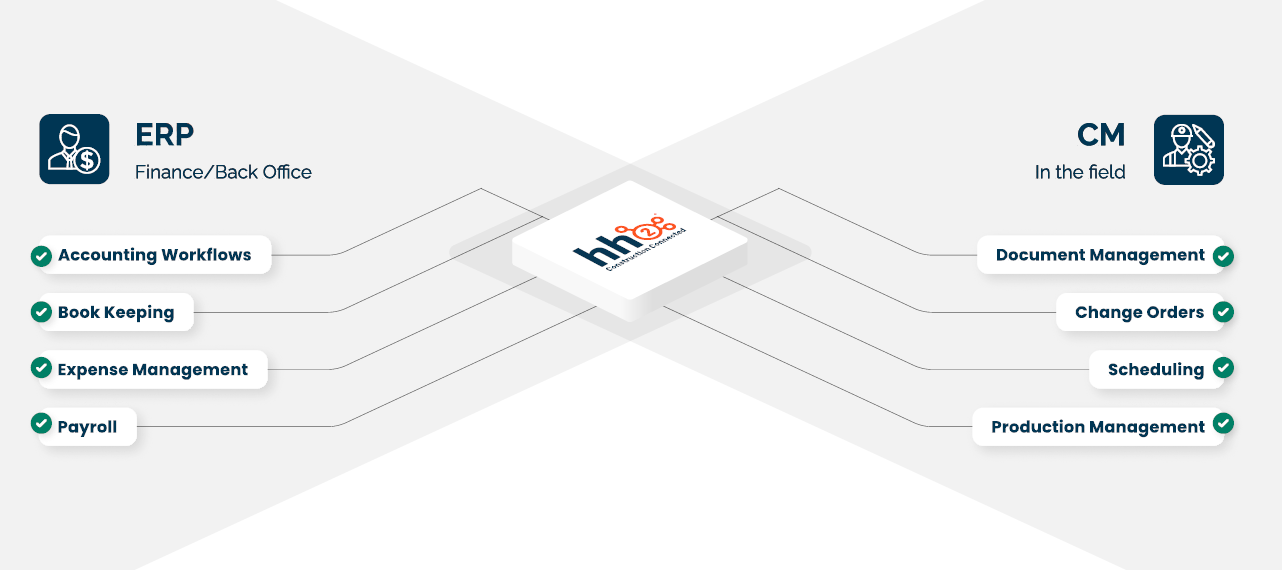CONNECTED CONSTRUCTION
INCREASE YOUR SPEED TO MARKET
Avoid reinventing the wheel; allocate development hours wisely.
- Cut development costs through integration with a proven platform
- Trust in your data security with the largest construction integration platform
- Single hh2 integration allows deployment across multiple ERPs efficiently
Experience connected construction today!
REAL-TIME FINANCIALS

MULTI-PLATFORM INTEGRATION
Connect your software with industry-leading ERPs.
Share data between your solutions and multiple ERPs with one integration for a connected construction experience.
- Rely on a proven iPaaS
- Leverage your solution for many ERPs
- Create secure data flows
- Maintain two-way sync data integrity
RAPID DEVELOPMENT
Increase speed to market with an unsurpassed iPaaS.
Don't reinvent the wheel; use development hours judiciously.
- Decrease development costs
- Go to market faster
- Deploy to multiple ERPs all at once
- Support your solutions, not integration
FAQ
Independent software developers can take their products to market faster. Enterprise Resource Planning systems can function without running into sync issues. End users can access data from accounting using third-party business management solutions.
ISVs like spending less time developing and more time making money. ISVs count on the UCM to integrate their solutions with multiple ERPs. They know the UCM stands on a proven track record. They understand that integration with the UCM cuts sync issue support to nearly nothing.
ISVs can take their products to market faster. They can commit development hours they would have spent on independent ERP integrations to creating more robust solutions for their customers. In addition, ISVs can release their products to multiple ERPs simultaneously because they only need to connect their software to the UCM's APIs.
The UCM offers an unparalleled integration platform for many industry-leading construction accounting systems. hh2 hosts the UCM in the cloud, keeping it on, available, and constantly monitored by competent support personnel. As a result, developers can link their software solutions to the UCM's APIs and let the UCM link with multiple platforms.
.png?width=608&height=406&name=image%2038%20(1).png)
